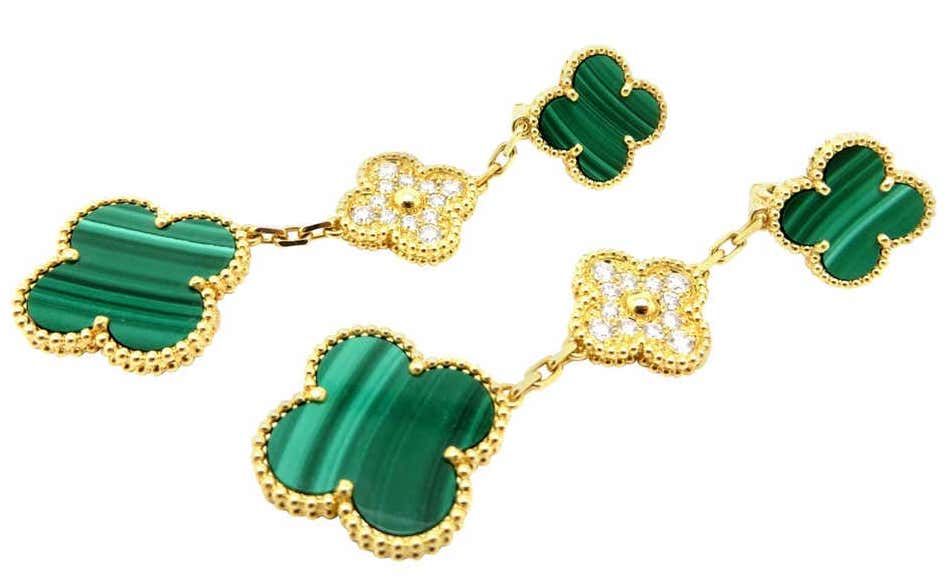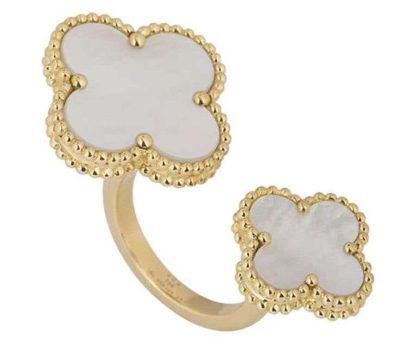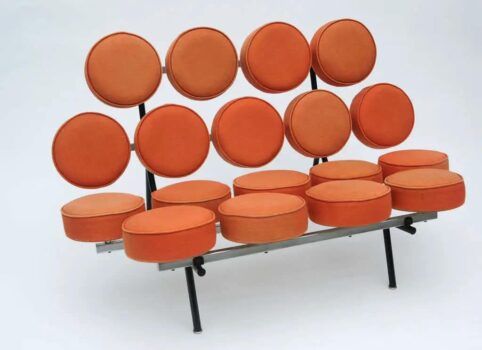
When Kate Middleton, the Duchess of Cambridge, stepped onto the red carpet at the BAFTA Film Awards in February wearing a Van Cleef & Arpels Alhambra necklace and matching earrings, the iconic designs were immediately recognizable to serious jewelry lovers and casual fans alike. What they may not have been as familiar with is the origin story of the more-than-50-year-old collection.
During the late 1960s, fine jewelry changed. Even the most haute of haute French houses expanded their inventories to include more daytime jewels to match the increasingly casual look of women’s fashion and to suit the 9-to-5 schedule of many who were joining the workforce. In 1969, Cartier launched its diamond-free gold Love bracelet. One year before that, Jacques Arpels came up with the all-gold Alhambra necklace.

Jacques — the grandson of Leon Salomon Arpels, who cofounded Van Cleef & Arpels in 1896 — liked to say, “To be lucky, you must believe in luck.” This mantra is embodied in the four-leaf clover motif, which can be found in sketches in the house’s archives dating to the 1910s. The quatrefoil shape also has architectural resonance, found in Gothic and Renaissance structures and, of course, in such Moorish buildings as the Alhambra palace in Granada, Spain, which gave its name to the Van Cleef & Arpels line.
The first Alhambra jewel was a long gold chain with 20 gold clovers, the surface of each creased and edged in gold beads. In 1971, the house began making the motif in colorful opaque hard stones, including malachite, lapis lazuli, onyx, coral, tiger’s-eye and turquoise. Today, pieces incorporating these stones and a beaded border are referred to as Vintage Alhambra.

From the moment the collection launched, it was a sensation. The easy-to-wear necklaces were exactly what women wanted to elevate their button-down blouses and wrap dresses. The jewels’ appeal spanned decades and generations. In April 1969, the 26-year-old Swedish actress Britt Ekland donned the original Alhambra gold style for the cover of Vogue. French actress Romy Schneider was around 36 when she sported an onyx and gold version in the provocative 1974 French film Le mouton enragé (Love at the Top), depicting relationships during the sexual revolution. Grace Kelly was photographed several times wearing her all gold and onyx and gold Alhambra necklaces during the seventies, including in the 1977 NBC special about her life, “Once Upon a Time Is Now . . . The Story of Princess Grace,” filmed when she was 48.

The Alhambra line has never gone out of production. Van Cleef & Arpels has refreshed the design by playing with the scale of the motifs and incorporating different gems, such as mother-of-pearl, carnelian and blue agate. It has also extended the collection to include earrings, bracelets, rings and a watch, as well as different necklace styles.
As for any icon with a long track record, the popularity of the Alhambra line, as measured in high-profile sightings, has ebbed and flowed. In the aughts, Reese Witherspoon was routinely photographed in her onyx Alhambra necklace. Sharon Stone and Mariah Carey were also seen sporting pieces from the collection. Kelly Rutherford wore several variations when she played the Upper East Side socialite Lily van der Woodsen on Gossip Girl.
Van Cleef & Arpels reignited Alhambra enthusiasm in 2018, when it celebrated the line’s 50th anniversary with new designs and festivities. And royalty is once more playing a part. The Duchess of Cornwall, Camilla Parker Bowles, has Alhambra pieces. And it is widely believed that the Alhambra set the Duchess of Cambridge wore to the BAFTAs was given to her by Prince Charles, her father-in-law, for her birthday, which was a couple of weeks earlier.
The so-called “Kate Middleton Effect” has been known to make an item she wears a best seller or turn a little-known brand into a household name. Van Cleef & Arpels hardly needs any help, but the duchess surely sparked even greater interest in Alhambra, gaining new admirers for a legendary brand that already has them in droves.


